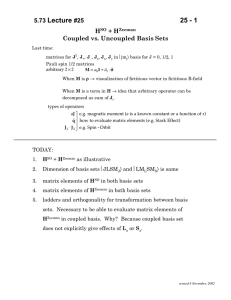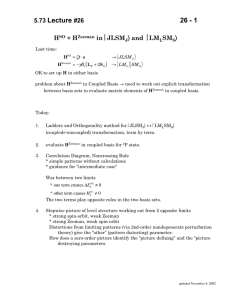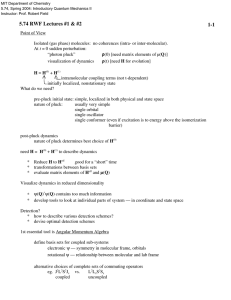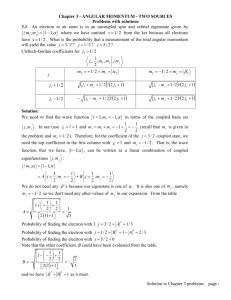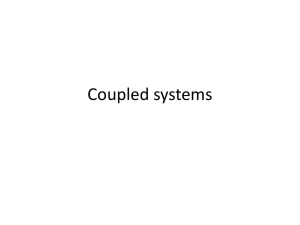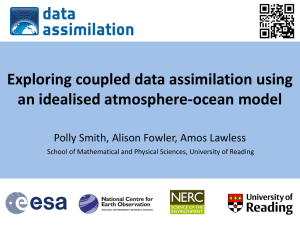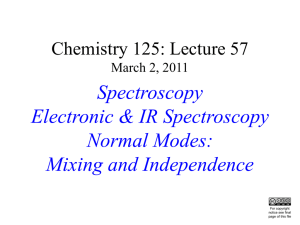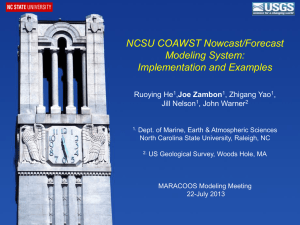coupling angular
advertisement
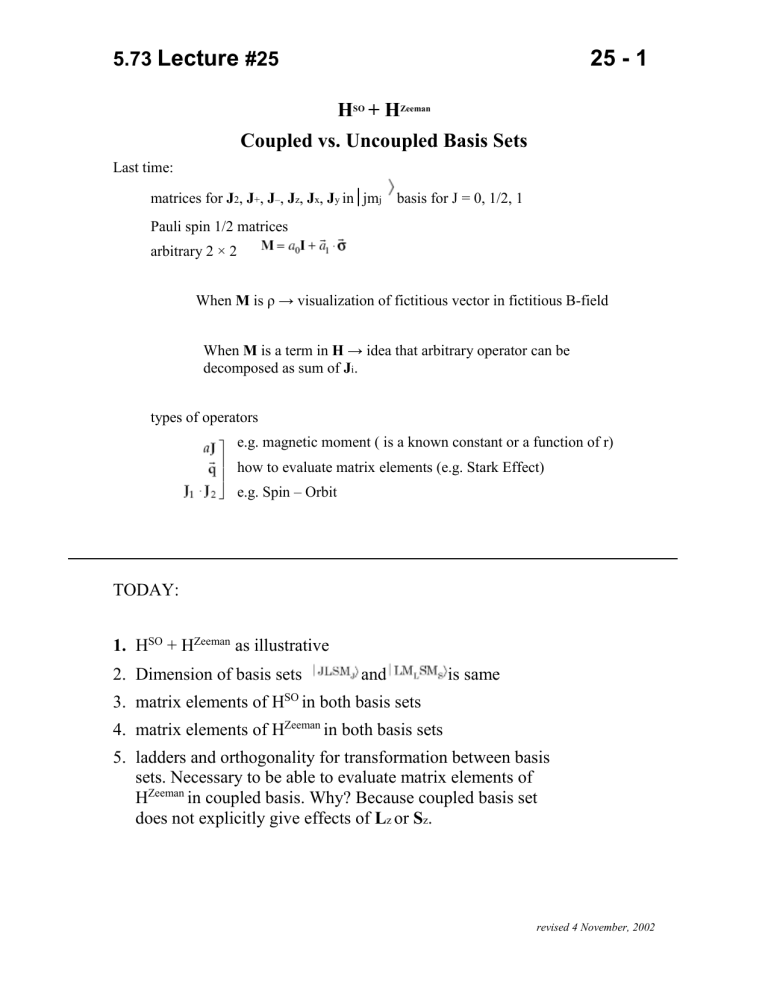
5.73 Lecture #25 25 - 1 HSO + HZeeman Coupled vs. Uncoupled Basis Sets Last time: matrices for J2, J+, J–, Jz, Jx, Jy in│jmj basis for J = 0, 1/2, 1 Pauli spin 1/2 matrices arbitrary 2 × 2 When M is ρ → visualization of fictitious vector in fictitious B-field When M is a term in H → idea that arbitrary operator can be decomposed as sum of Ji. types of operators e.g. magnetic moment ( is a known constant or a function of r) how to evaluate matrix elements (e.g. Stark Effect) e.g. Spin – Orbit TODAY: 1. HSO + HZeeman as illustrative 2. Dimension of basis sets and is same 3. matrix elements of HSO in both basis sets 4. matrix elements of HZeeman in both basis sets 5. ladders and orthogonality for transformation between basis sets. Necessary to be able to evaluate matrix elements of HZeeman in coupled basis. Why? Because coupled basis set does not explicitly give effects of Lz or Sz. revised 4 November, 2002 5.73 Lecture #25 25 - 2 Suppose we have 2 kinds of angular momenta, which can be coupled to each other to form a total angular momentum. orbital spin operate on different coordinates or in different vector spaces total The components of L,S, and J each follow the standard angular momentum commutation rule, but These commutation rules specify that L and S act like vectors wrt J but as scalars wrt to each other. Coupled vs. uncoupled representations. * matrix elements of certain operators are more convenient in one basis set than the other * a unitary transformation between basis sets must exist * limiting cases for energy level patterns * evaluate matrix elements in both basis sets * look at energy levels in high field limit * look at energy levels in low field limit revised 4 November, 2002 5.73 Lecture #25 25 - 3 lower case for atom angular momenta Notation upper case for many - angular momenta two different CSCOs coupled basis canct be factored) recall tensor product states and “entanglement” uncoupled basis explicitly factored) 2. Coupled and Uncoupled Basis Sets Have Same Dimension COUPLED every J contributes 2L + 1 to sum If L > S, there are 2S+1 terms in sum total dimension of basis set for specified L,S UNCOUPLED total dimension 2L12S1again term for term correspondence between 2 basis sets ∴ a transformation must exist: Coupled basis state in terms of uncoupled basis states: revised 4 November, 2002 5.73 Lecture #25 25 - 4 Uncoupled basis state in terms of coupled basis states: OR 3. Matrix elements of HSO= A. Coupled Representation a purely diagonal matrix. B. Uncoupled Representation Nonlecture notes for evaluated matrices revised 4 November, 2002 5.73 Lecture #25 25 - 5 center of gravity rule: trace of matrix = 0 revised 4 November, 2002 5.73 Lecture #25 25 - 6 (obeyed for all scalar terms in H) Each box is for one value of MJ = ML + MS. revised 4 November, 2002 5.73 Lecture #25 25 - 7 4. Matrix Elements of HZeeman A. very easy in uncoupled representation strictly diagonal B. coupled representation can’t evaluate matrix elements in coupled representation without a new trick 5. If we wish to work in coupled representation, because it diagonalizes HSO, need to find transformation lengthy procedure: and orthogonality Always start with an extreme ML, MS basis state, where we are assured of a trivial correspondence between basis sets: coupled uncoupled revised 4 November, 2002 5.73 Lecture #25 25 - 8 Thus we have derived a specific linear combination of 2 uncoupled basis states. There is only one other orthogonal linear combination belonging to the same value of ML + MS = MJ: it must belong to the basis state. NONLECTURE Work this out for 2P now use orthogonality: Continue laddering down to get all 4 J = 3/2 and all 2 J = 1/2 basis states. You work out the transformation for 2D! Next step will be to evaluate HSO + HZeeman in both coupled and uncoupled basis sets and look for limiting behavior. revised 4 November, 2002
